
9 Common Tricks for Avoiding Germs That Actually Don’t Work
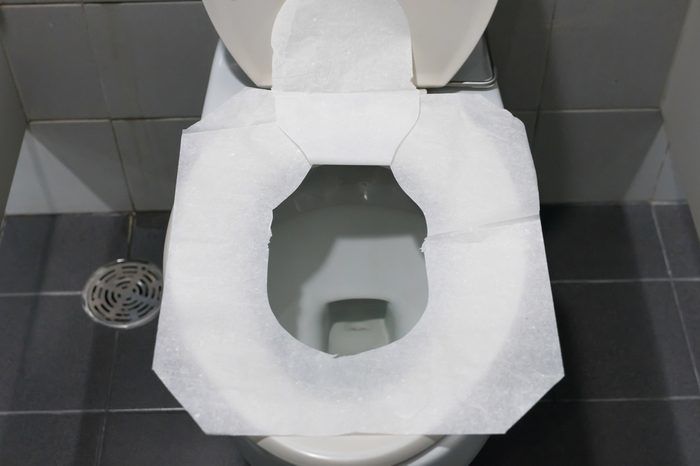
Using a paper toilet seat cover
You may feel more comfortable in public restrooms when you can place that thin sheet of paper between the bare toilet seat and your bare behind, but in reality, you might as well sit straight down. Those toilet seat covers, which are often made of tissue paper, are absorbent, and any bacteria or liquids will quickly be wicked up to your tush. But don’t fret. Your skin is all the protection you need. Any potentially problematic bacteria you might pick up would have to find a way into your body through an open wound or, more likely, your hands.
Living by the five-second rule
Everyone does it-scoop up a snack, pacifier, or utensil that just hit the floor and claim that it’s OK thanks to the “five-second rule.” Research shows, however, that this bit of wisdom is a myth. Yes, the longer something stays in contact with a dirty surface, the more bacteria it will pick up. But germs can be picked up in as little as one second, so wash it or toss it-the damage is done.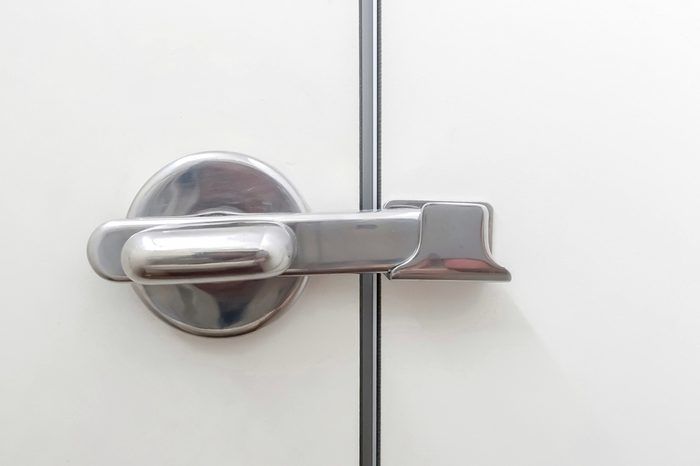
Using your shirt sleeve to open a bathroom door
Creating a block between a germy door handle and your hands is a good idea, but your own shirt sleeve isn’t idea, says Jessica Pettit with statefoodsafety.com. “Using your own clothing, such as a shirt sleeve, to open doors doesn’t actually help you avoid germs, because any bacteria that are on the door handle will just move to your clothing,” she says. “It can hold on to pathogens easily, and the moment your hands brush against the clothing, they will become contaminated.” Your best bet is to use something disposable, like a paper towel, she adds.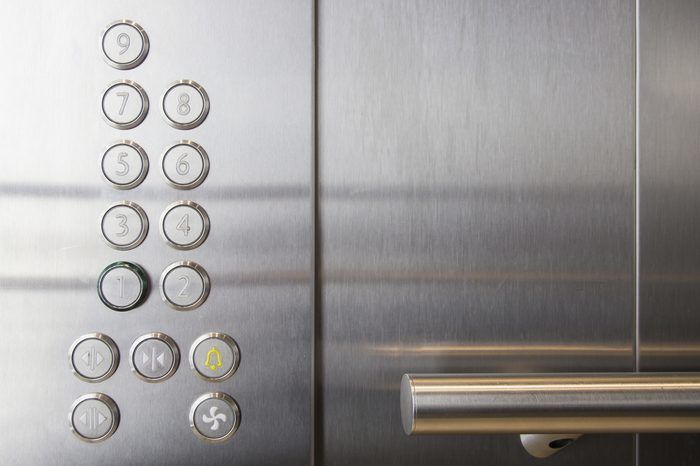
Pressing elevator buttons with your knuckle
Some people, in an effort to avoid bacteria and viruses on public surfaces, will use the back of their hands, forearms, or even elbows to touch surfaces. That’s an admirable effort but not very effective, says Nidhi Ghildayal, PhD, an infectious disease researcher at the University of Minnesota. “The thought process behind this habit is likely that less skin is being exposed to the unwanted germy surface,” she says, “but the back of your hand, just like your front, also has a likelihood of subsequently touching your face or other vulnerable areas. So using the back of your hand may or may not actually be helping you.”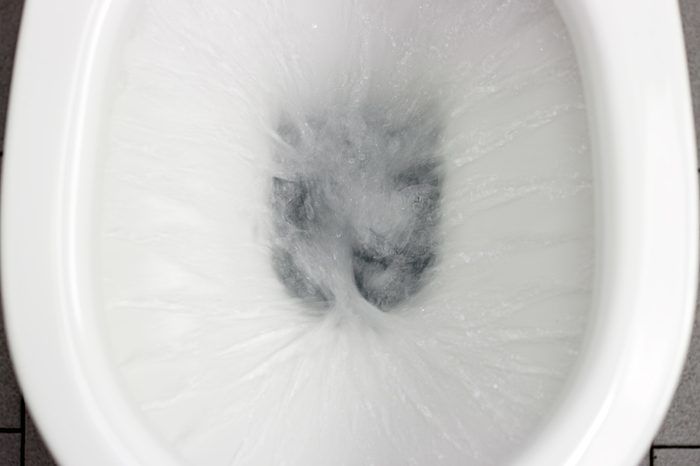
Flushing public toilets with your feet
“Flush handles do harbor a lot of bacteria,” Ghildayal says, “but it’s partially due to individuals using their feet rather than their hands to flush. The floor and the bottom of your shoes are generally some of the dirtiest parts of a bathroom.” You can skip this precaution because what’s the next thing you’ll do after flushing? That’s right-wash your hands, which is the best way to avoid transferring bugs. Another reason to skip this habit, says Ghildayal, is that the bacteria you’re trying to avoid are likely already dead. “Gut bacteria don’t thrive for long on the cold, smooth surfaces of public restrooms, such as bathroom fixtures, as this environment is quite different than inside the human body.”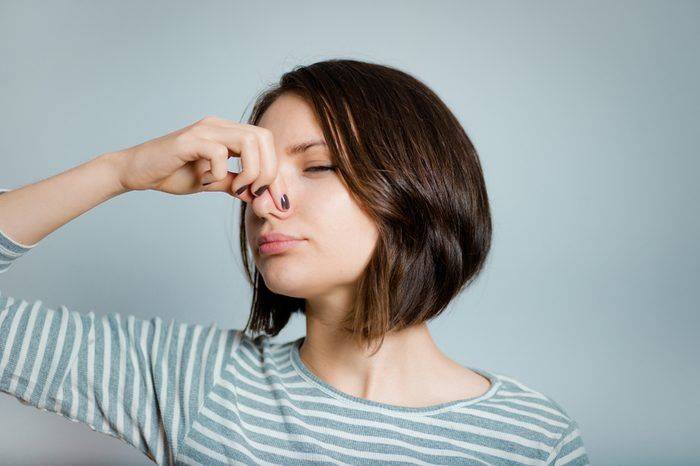
Holding your breath when someone sneezes or coughs
“Remember when someone last sneezed or coughed in your face and you instinctively held your breath for the germs to pass?” asks Caleb Backe, a health and wellness expert for Maple Holistics. “Unless you can manage to rapidly move away from the affected area, the chances of holding your breath long enough to avoid any germs are slim.” The bigger issue is-ick-any droplets that transfer from the sick person to you. Most germs transfer through the hands, so the next time you scratch your nose or rub your eyes, you’ll be giving the germs entry to your body.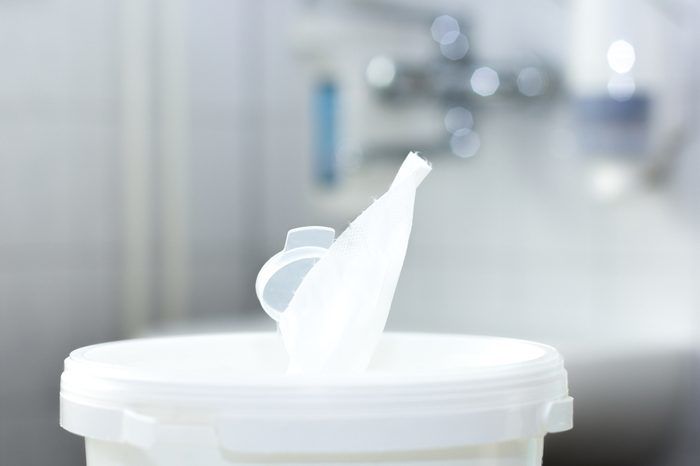
Cleaning your kitchen with an antibacterial wipe
Keeping your house clean will help protect you and your family from infectious bugs. However, you may be doing more harm than good if you’re hurriedly wiping down multiple surfaces with one antibacterial wipe. You may end up spreading bacteria around the room if you don’t frequently swap to a fresh wipe; look closely at the directions and you’ll probably see that the surface should stay wet for four or more minutes after wiping if you want them to clean properly. Plus, some harmful bacteria survive a cursory swipe-they need a more potent solution to knock them out.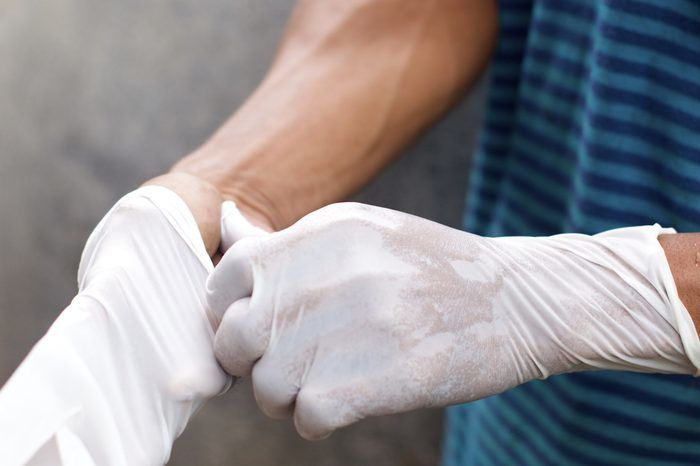
Wearing gloves indoors
Slipping on a pair of gloves to grip potentially grimy handles, doorknobs, or poles may not achieve what you’re hoping. The material is most likely absorbent, and many of the bacteria and viruses you’re coming into contact with may live just as long on fabric gloves as they do on your hand. When you pull them off or put them back on, you’ll still pick up living germs on your bare hands. Even worse: gripping the fingertip of a glove with your mouth to take it off.
Hovering over the seat to urinate
Women may think it’s safer to hover over a toilet seat than sit down for fear that bacteria on the seat may stick to your skin when you stand up. They will, but as we’ve already learned, that’s OK. The problem with this habit is that, according to the National Institute of Diabetes and Digestive and Kidney Diseases, hovering can make emptying your bladder more difficult. Do that too often, and you could end up with bladder problems.











